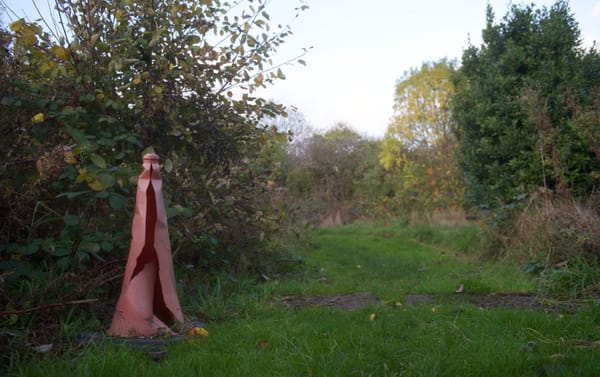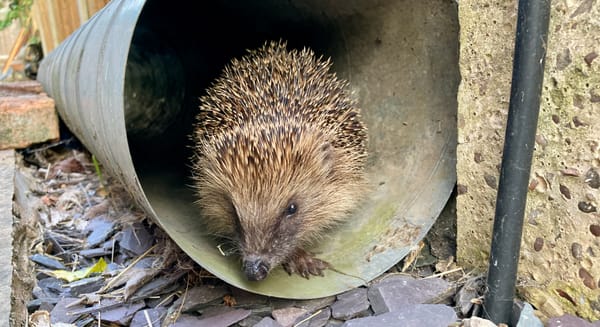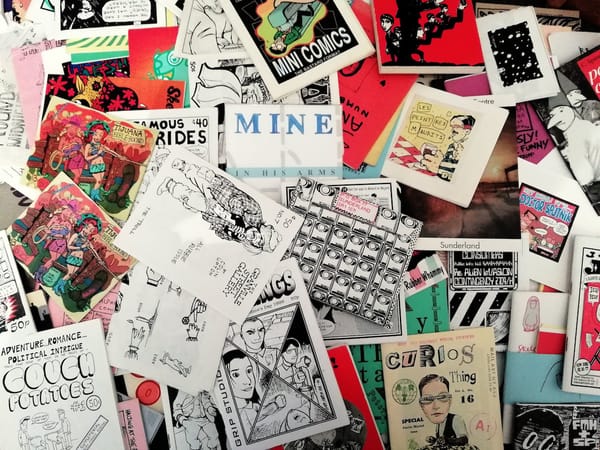The Aerobic Digest 7: Back to the heaps
I got back to the allotment after some enforced rest, during which I collected a lot of cool things for you to watch and read. Scroll down for an inverted triangle.
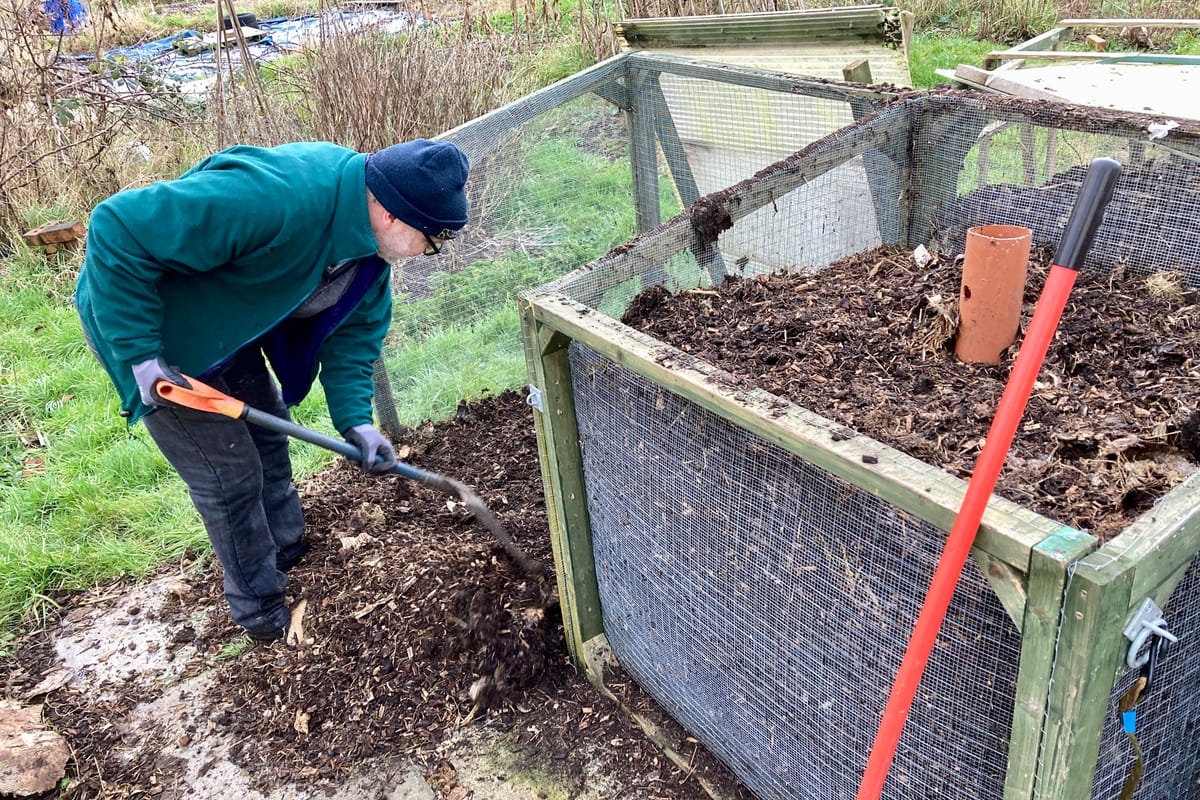
Today was my first visit to my compost bays since November 5th, and also my first newsletter since that evening. I said when signing off that I wasn’t expecting to write for a couple of weeks but didn’t expect it to last quite so long.
I’ve been knocked back by exhaustion this last month. A combination of a very weird year, the ever-lingering Long COVID and that nasty November cold that was going around all conspired to wipe me out, putting me on light duties at work and forcing composting on the back burner. But today Fiona helped with some shovelling and I got back on top of it again.
The first order of business was to free up a bay to start a new heap, so we turned the the second oldest pile into the third oldest. They both look great – nice and dark and loose – and should be ready for spreading very soon. Both had a lot of woodchip added at the time and confirm my theory that while it may not break down quickly, woodchip helps everything else rot, possibly by giving the microbes somewhere to hang out and by aiding the airflow.
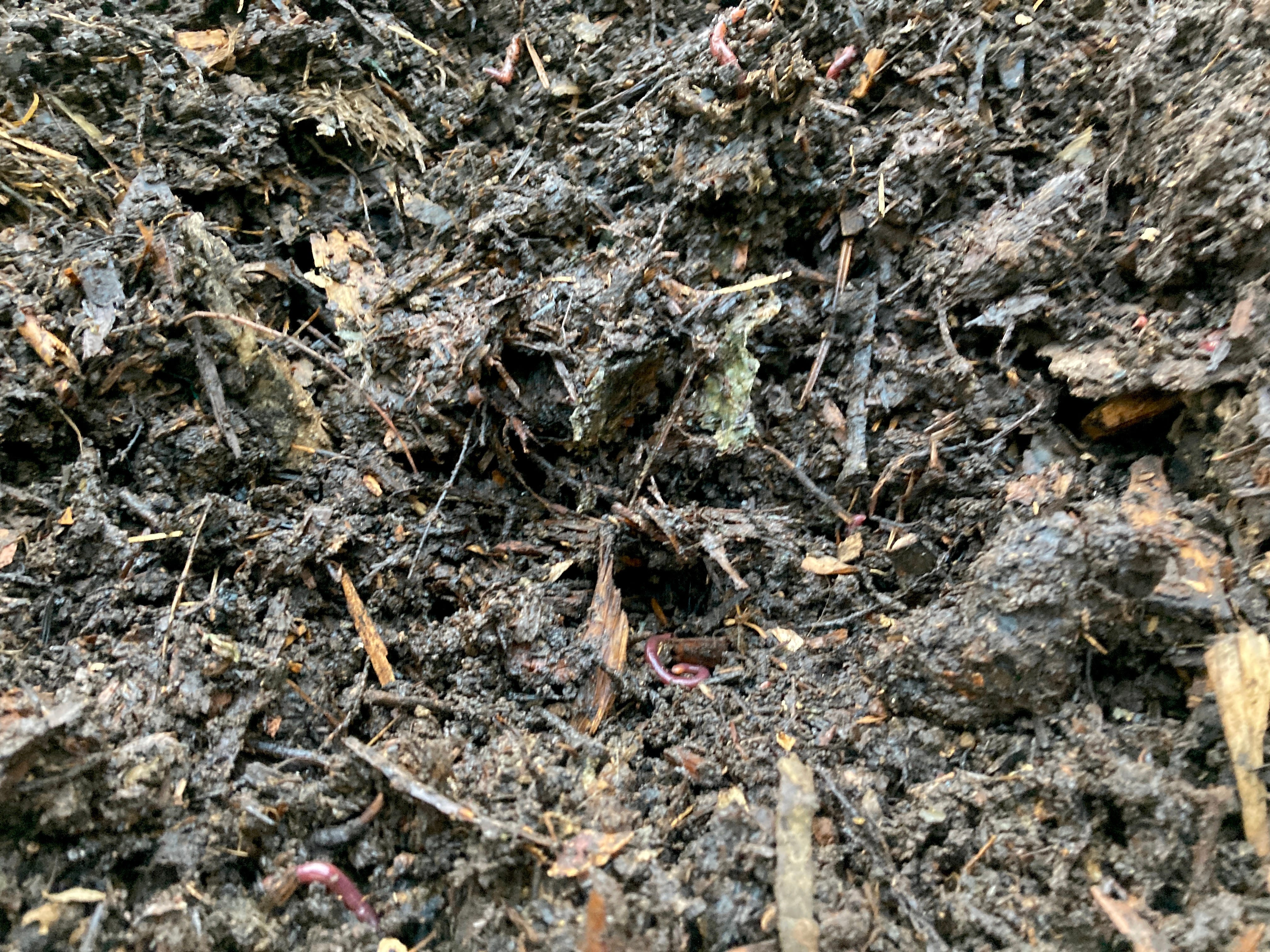
With the square bay free we got to work filling it up. I had six weeks worth of hay from the rabbits but I don’t like to let this dominate the pile. While it sits in that nice spot between green and brown, it has a tendency to get too dry or too wet on its own and needs to be part of a mix to break down properly.
Unfortunately I haven’t been hoarding that much food waste this last six weeks (or maybe that should be fortunately, given it sits outside the back door in stinky buckets) but I did take delivery of all that horse shit in the autumn! Balance that out with a decent helping of shredded paper and woodchip and hopefully we have a good mix.
Over the next fortnight I’ll be attacking the hexagonal bay which I decided was done in November and which has been patiently sitting in the autumn rains, waiting for its first turn. This will involve adding a lot of paper and woodchip as I fear I went too heavy on the greens. If it’s not a stinky anaerobic mess in there I’ll be amazed.
Fun things to read and watch.
I’ve started the process of archiving links in a more useful way on Raindrop, a bookmarking service I’ve recently been playing with. So far I can share this dump of everything but I hope to make it into a more useful service as I get used to it. There’s a lot of useful stuff on the internet and I have this eternal urge to organise it all.
If you’re taking some time for yourself this winter break I hope some of these will prove an interesting diversion.
Thermal imaging a compost pile
I have a small thermal camera from when I was a lens-based digital artist years ago (I’m much better now) and it’s never occurred to me to dig it out and point it at the compost. Having seen this video from Edible Acres I’m definitely going to give it a go now.
Caring for “the below-ground livestock”
I love this term for the organisms that live in the soil, from bacteria to fungi to worms and bugs. It comes from Soil, Diversity and Resilience, an article on the Landworkers Alliance website by agrobiodiversity farmer Tim Williams, giving a succinct introduction to the benefits of moving away from a monoculture farming systems.
To speed the development of the below-ground livestock I introduced complex microbial communities through the mode of composting, applying this compost as a bio-priming agent at sowing, followed up with successive compost tea applications. All the while managing the aboveground livestock on an adaptive grazing system. The results speak for themselves, Erth Barton is now a fully functioning regenerative organic farm ecosystem, full of soil life, a thriving plant community with birds, bats and insects making a return.
A no-dig orange peel forest
In the 1990s a couple of researchers convinced an orange juice company to donate some land they owned near a national park and in return they could dump all their waste orange peels over a three hectare patch of barn soil-degraded land. 1,000 truckloads later it looked like this.
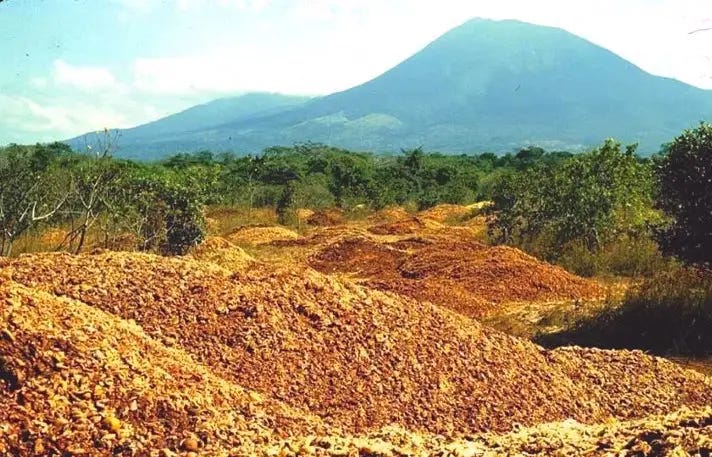
Which obviously doesn’t look great, and for various reasons the project was abandoned. But when the researchers went back 16 years later they found a thriving forest with a massively increased biomass, compared with a control patch of land that hadn’t been covered in orange peel.
The best theory as to what happened is the oranges were so dense they suppressed the invasive grasses that were the only thing able to grow in the degraded soil, and then once to peel had rotted to mulch, native seeds could blow in and take root. In other words, no-dig forestry!
Grass clipping to sheep guts
I love the wild journey in this otherwise light look at a New Zealand woman’s composting adventures. She starts off as all of us might, composting her lawn clippings and struggling to get the green / brown / water balance right, but soon she’s adding sawdust from her brother’s firewood business, fish heads from her fishmonger friends, and before you know it, “when we kill a sheep we’ll throw the guts in”.
via my sister
A healthy soils and compost policy guide
This is a bit heavy for me at the moment, but if you’re into policy documents and webinars you may enjoy this deep dive into what looks like a concerted effort from the Institute for Local Self-Reliance to sort out the woeful state of the USA’s soil: Healthy Soils and Compost Policy Guide: Synergies and Opportunities
A nation that rebuilds its soils rebuilds itself
Enjoy this great lecture from Professor Karen Johnson which wonderfully outlines the importance of thinking about soil, riffing off Roosevelt’s quote, "a nation that destroys its soils destroys itself” referring to the American Midwest dustbowl of the 1930s depression. This is the sort of thing that gets me enthused about composting projects, because it’s not just about food waste or even about growing food - it’s a metaphor for how we live.
via Laura at TAWS
What food waste means for climate change
Some scary statistics around food waste and what happens to it (so much is landfilled where it generates methane) plus this neat chart. Improving the top ones is going to take some radical societal change but increasing compost capture (if you like) doesn’t feel too hard.
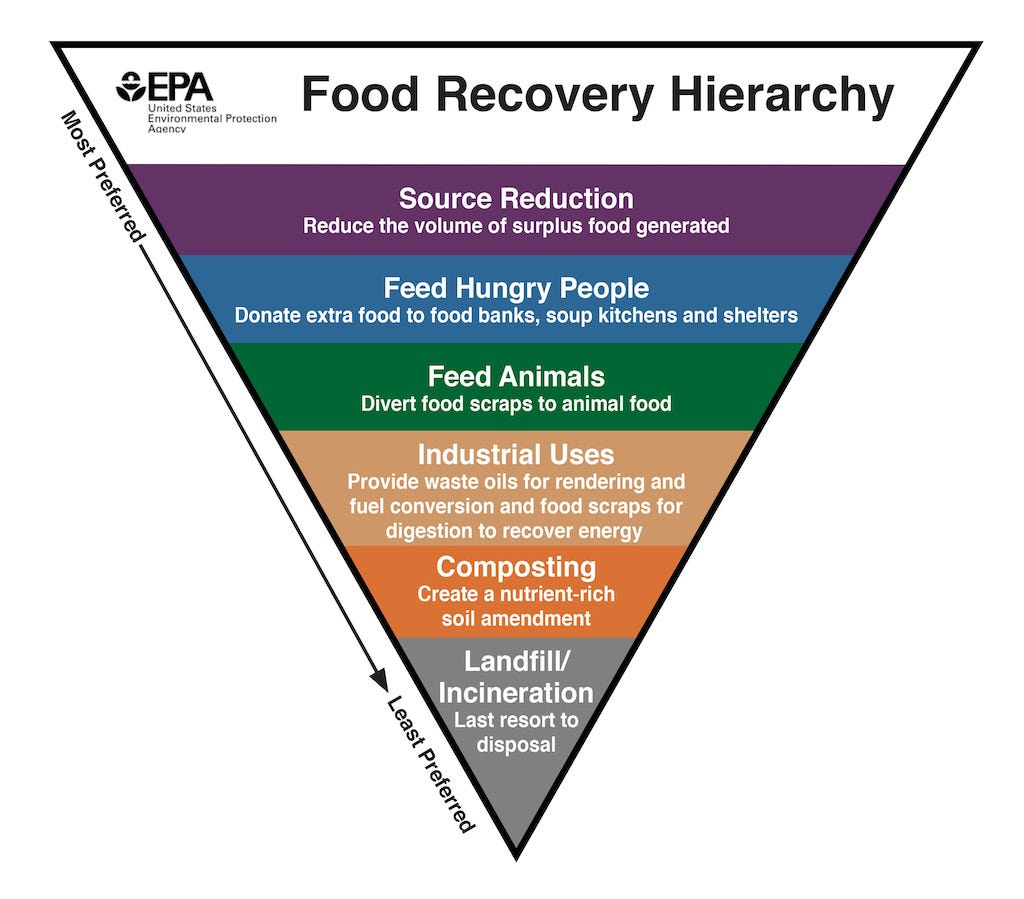
Winter composting with Charles Dowding
Just as I’ve getting ready to put this issue to bed I spot a new Charles Dowding video in my feed, and it’s one of his composting ones!
He’s been running a few experiments in his garden over the years from his I-want-one seven bay structure to a more DIY pallet-based 3-bay system, plus a couple of Daleks and a wormery, and it’s great to see how they work to produce different types of compost at different times of year.
Nice tip for spreading compost in the winter so the frost breaks it up. I hadn’t thought of that.
Composting gift guide
It’s far too late to order anything for Christmas and I wasn’t seriously going to do a gift guide, but I did come across Brenna Quinlan, an illustrator and permaculture from Australia who does compost-related prints and t-shirts. I like this spin on the Rousseau quote.
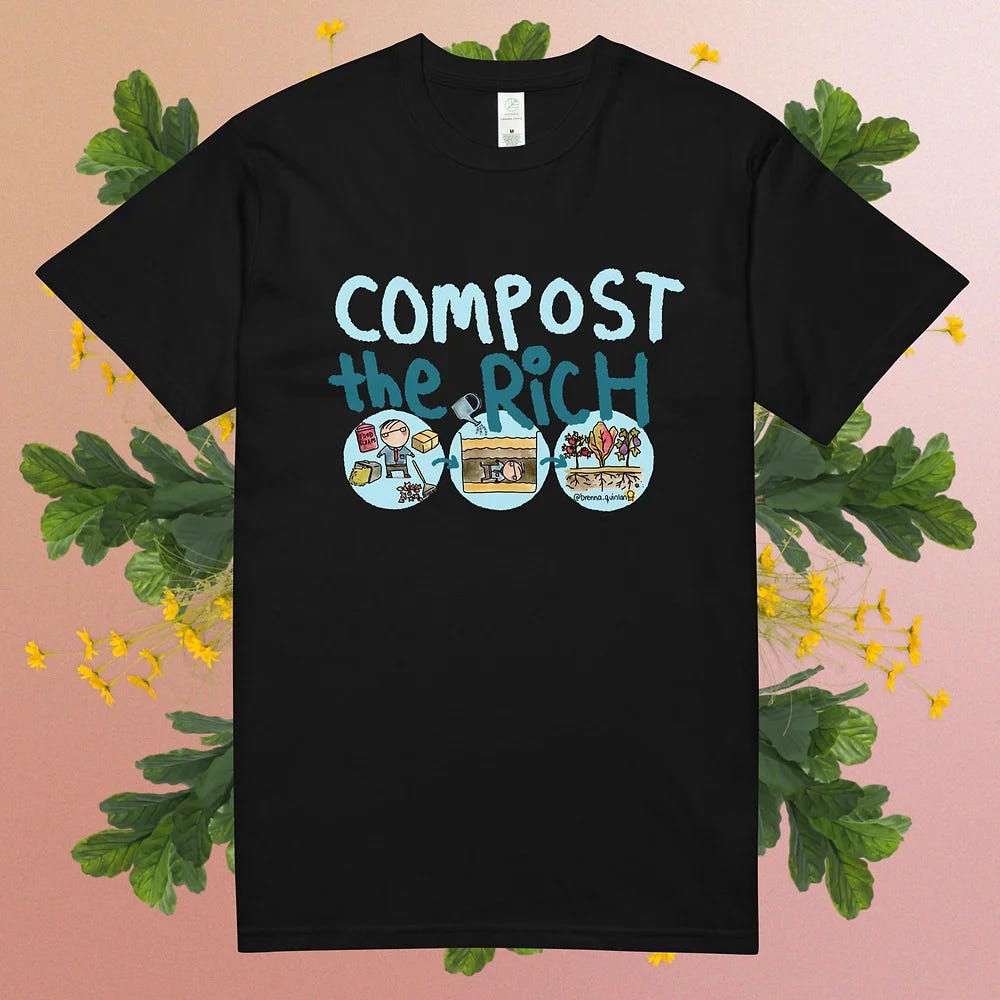
And then there’s the mug my mum got me last year.
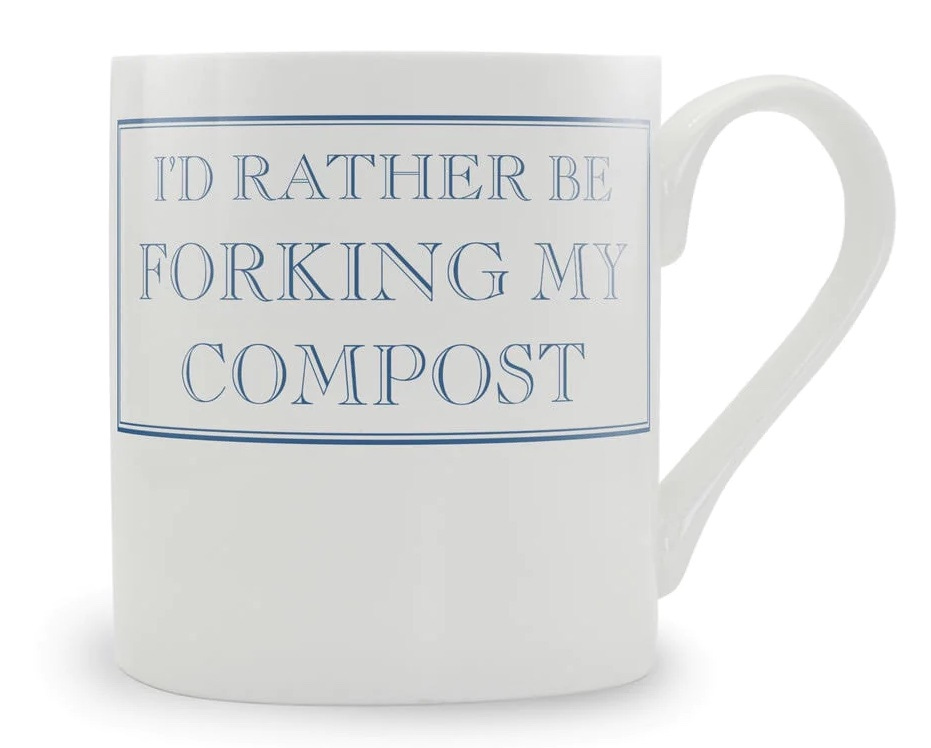
That should be enough to keep you going! See you in the new year, if not before.
Your friend in rotting vegetable matter,
Pete Ashton
